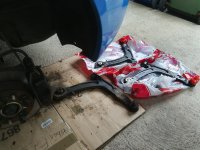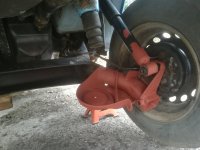I am going to buy a Panda (Mk 3) . I want either an Active 1.1/1.2 or Multijet to qualify for the cheaper RFL.
Looking online and checking past MOT's most Panda s seem to all fail on corroded springs, faulty dampers or suspension/steering rubbers and or ball joints. Are these faults model/year specific?. If petrol 1.1 or 1.2. Would love a skydome but rare.
Must admit laening toward Multi Jet. Want the car for occasional use and it will be parked outside
Looking online and checking past MOT's most Panda s seem to all fail on corroded springs, faulty dampers or suspension/steering rubbers and or ball joints. Are these faults model/year specific?. If petrol 1.1 or 1.2. Would love a skydome but rare.
Must admit laening toward Multi Jet. Want the car for occasional use and it will be parked outside



